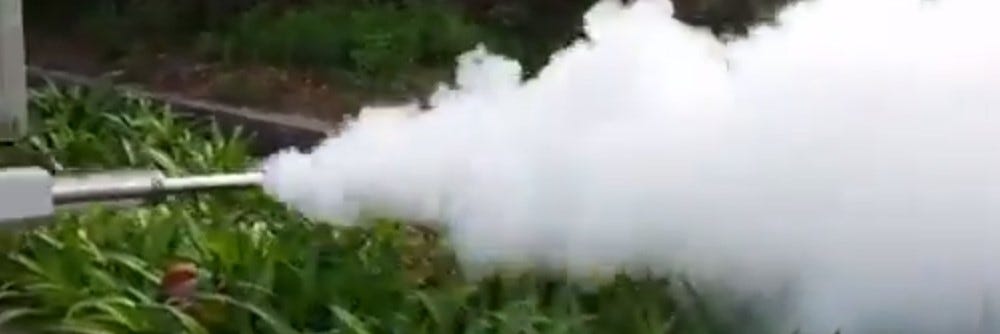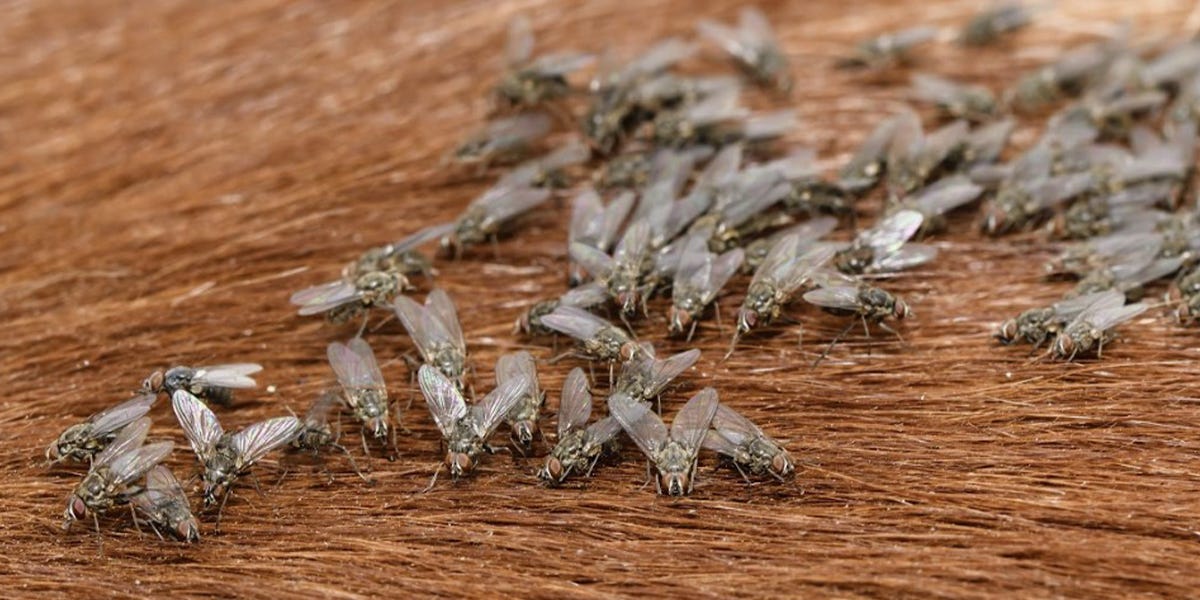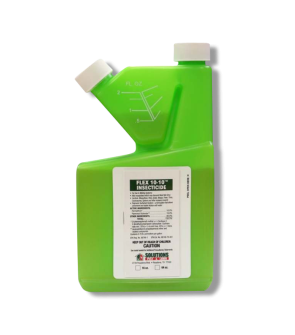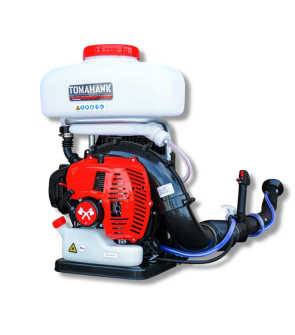Horn Fly Control
Most Effective Products
Horn Fly Control: How to Get Rid of Horn Flies
This page is a general horn fly control guide. Using the products and methods suggested you will reduce the populations of horn flies. Follow this guide and use the recommended products and we guarantee a great reduction in your horn fly infestation.
Horn flies are one of the most problematic pests for animal or farm owners to experience on their cows. The early summer is the time most cattle experience irritating bites and activities from horn flies. When they are numerous, horn flies can reduce weight and milk production of cattle through consistent feeding and irritation from bites.
In contrast to other fly species, both sexes of the horn fly can feed on the animals blood. They spend most of their life on cows, bulls, and calves and feed up to 20 to 30 times a day. These animals can tolerate a low amount of horn flies, but when populations reach 100 to 200 per animal it is then this pest becomes an issue.
As warm weather arrives in your region so will the presence of bothersome, biting flies like horn flies. Though they are smaller than other nuisance flies and unable to travel long distances they will generate a series of problems for your cattle. Read on to learn how to eliminate horn flies from your property with professional information and quality products.
Identification

Before proceeding with treatment, it is important to first correctly identify the pest and confirm it is a horn fly. Careless identification can lead you to using the wrong treatment methods, which can be a waste of time and money. Here are some key characteristics of horn flies to know what they look like:
- Horn flies are similar in color to stable flies and house flies with a dark, brown gray to black coloration, but smaller in size at 4 mm long.
- Adult horn flies have two dark strips on the thorax and a few spots on the top of the abdomen.
- Have spear-like piercing mouthparts protruding from under the horn fly heads to allow them to feed on animals. Both the male and female have these mouthparts.
- Has brownish-red antennae on its head which point downward.
- Larvae are yellow to white in coloration measuring about 7 mm long. In their pupae stage, they are a dull red brown coloration and measure between 3-4 mm long.
- Broad shaped wings that overlap and held in a V formation.
Use the image and description above to correctly identify horn flies on your property. If unsure, then contact us by email or in-person at one of our store locations with a high-quality image of the pest to properly identify the insect. You may also contact us through phone for additional questions and recommended treatment approach.
Inspection

Once you have confirmed horn flies on your property or animals, you can proceed with inspection. During this phase, you are learning where horn flies are congregating, how severe of an infestation you have, and the conditions that are attracting them.
Where to Inspect
During the hot day, horn flies are usually found on cattle, bulls, cows, and calves in open pastures. In some cases, other animals like horses or feedlot cattle can serve as a suitable meal. Manure that is still fresh or moist are ideal sites for breeding and egg laying activities for horn flies.
What to Look For
Unlike other fly species, horn flies accumulate in groups on the top of shoulders, back and sides of cows. They move to the cattle's stomach area or undersides during very hot or rainy weather. On animals, horn flies will rest with its head pointed downward.
They will only leave the cattle to lay its eggs in moist manure. When an infested animal secretes its waste the horn fly will immediately swarm to it. Within a day there will be several white maggots in the waste, where they will feed and grow until ready to move onto the animal.
Treatment
Before beginning any pesticide treatments or pest control plan, you will need to wear the appropriate personal protective equipment (PPE).
Most horn fly infestations occur outdoors on animals from late May to early June and begin to decline when the weather turns hot and dry. They begin to emerge again in September and early October until the weather becomes cooler or frost occurs.
Horn flies are best eliminated with pour-on applications and residual spray applications early in the season. Consult with your veterinarian regarding the active ingredients being used in these products to ensure they can be used on your cattle and the labeled application sites. Sanitization is also essential when controlling horn fly populations.
Step 1: Clean-up Waste

Horn flies are attracted to areas with manure and rotting organic matter such as hay and animal bedding due to breeding potentials. All of these conditions pose an issue to the average cattle owner since these animals create high amounts of waste each day.
Regardless to the size of your cattle herd, handling the waste and moist hay should be done on a regular basis or at least once a week. Clean up any of these organic matters around barns, fences, around water troughs, in stalls and paddocks, from fields or pastures where animals are kept, and from under feed bunks. Manure piles should be relocated several feet away from the barns foundation or where the animal is kept during the day.
Following these practices will help to control horn fly larvae and pupae.
Step 2: Pour-on Application

Except for the larvae and pupae stage, horn flies spend their entire lives on the cattle. For this reason, you will want to use a concentrate insecticide that can be used as a pour-on application for the animal to be treated. Flex 10-10 Insecticide is a pyrethroid based emulsifiable concentrate that is known for its long residual and quick knockdown of pests, including horn flies.
For a general application on dairy and beef cattle, and horses dilute 4 teaspoons of Flex 10-10 Insecticide per gallon of water (1:200) to make 0.05% permethrin ready to use product. For severe horn fly infestations, use 8 teaspoons of product per gallon of water (1:100). This makes 0.1% permethrin ready to use product.
Apply to wet the hair thoroughly, especially topline, underline, flanks, withers, and other infested areas. Repeat every 5 to 12 days when insect pressure is not excessive, or as needed when there is a large population of horn flies.
For maintenance use, dilute 1:400 (2 teaspoons per gallon of water). This makes 0.025% permethrin ready to use product.
Step 3: Spray Application on Animal Housing Areas

Insecticidal sprays with a long-lasting residual like Flex 10-10 Insecticide is recommended for on-going control and prevention of horn flies. This product may be used in areas such as animal quarters, dairy and beef barns, and other listed livestock or animal housing areas, and residential lawns. To apply Flex 10-10 Insecticide, use an automatic misting and ULV spraying system like the Tomahawk TMD14 Backpack Fogger.
Mix 1/2 gallon (64 fluid ounces) of Flex 10-10 Insecticide in 55 gallons of water to yield a solution of 0.09% permethrin plus 0.09% PBO. For high populations of horn flies, mix up to 1 gallon of product in 55 gallons of water to yield a solution of 0.18% permethrin and 0.18% piperonyl butoxide. Animals and people should be removed from the area to be treated and be thoroughly ventilated prior to re-entry.
Fill the sprayer tank with half the amount of water, add measured amount of Flex 10-10 Insecticides, and then add the other half of water to the tank. Close the tank lid and shake to ensure even agitation. Spray the top and bottom of foliage leaves and thoroughly throughout barns. Make sure to close milk tank lids to prevent contamination from spray and remove milking utensils.
Do not spray or release pesticides where feed or water is directly exposed to spray mist.
Prevention

Once horn flies have been removed, you will to make sure they do not return. Here are some preventative measures to take to keep horn flies off your cattle and your property:
- Continually remove manure, uneaten feed, and moist hay in and around your barn and pastures to prevent breeding habitats for horn flies.
- Relocate manure and compost piles several feet away from your barns foundation and areas where animals are kept.
- Consider giving your cattle an approved feed additive to make their waste unsuitable for horn fly larvae.
- Alternate between organophosates and pyrethroid products each year to prevent horn flies from becoming resistant to these active ingredients. Apply Flex 10-10 every 90 days to application sites and every 5 to 12 days as a pour-on application when insect population is not excessive.
Key Takeaways
What are Horn Flies?
- Horn flies are small blood feeding flies that continuously feed and live on cattle.
How to Get Rid of Horn Flies
- To get rid of horn flies, you will need to sanitize in and around your barn of manure, wet hay, and animal bedding. Once this is removed, use a combination of pour on application and spray application on treatment site with Flex 10-10 Insecticide.
Preventing Horn Fly Reinfestation
- To keep horn flies away from your cattle, animals, and property then integrated pest management should be implemented on a weekly basis as well as applications of Flex 10-10 Insecticide to your labeled site every 90 days.













































































































































































































































































































































































































































































































































